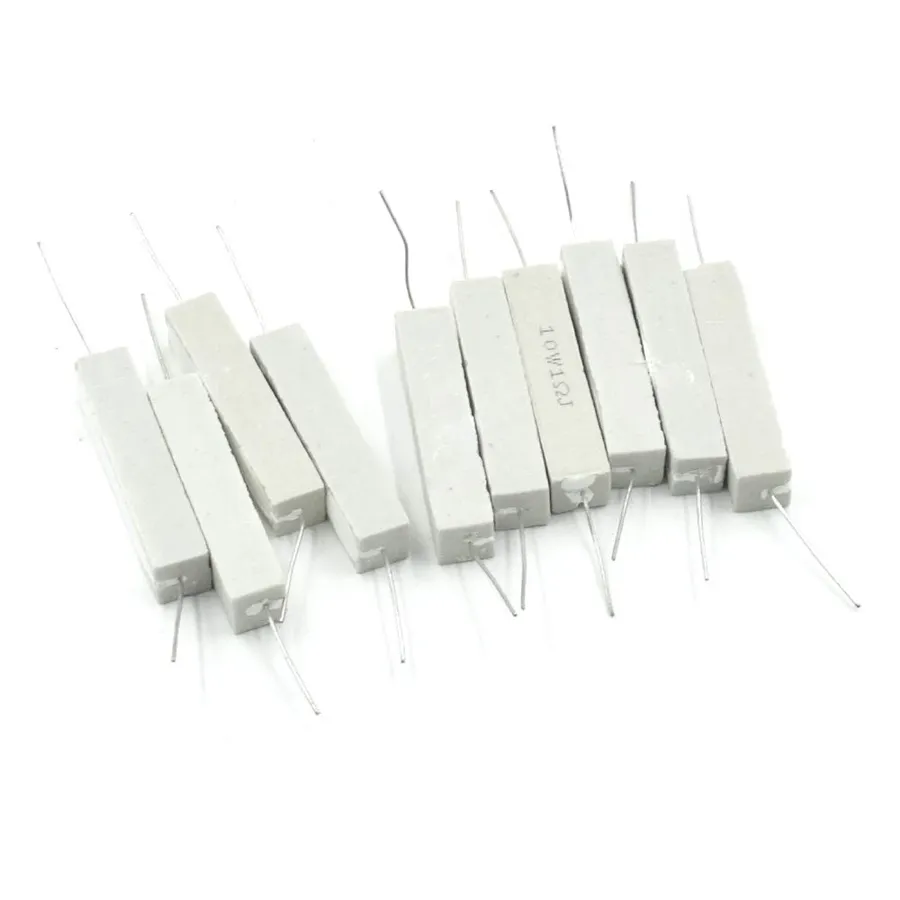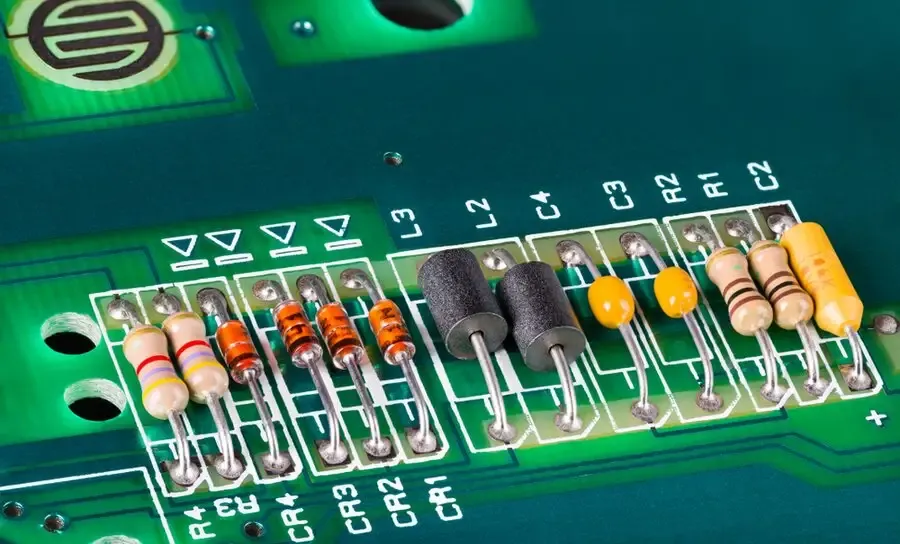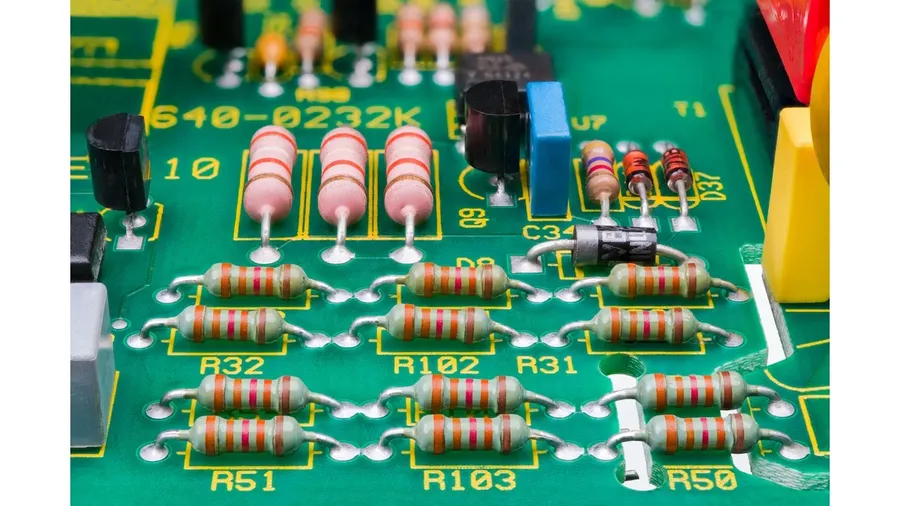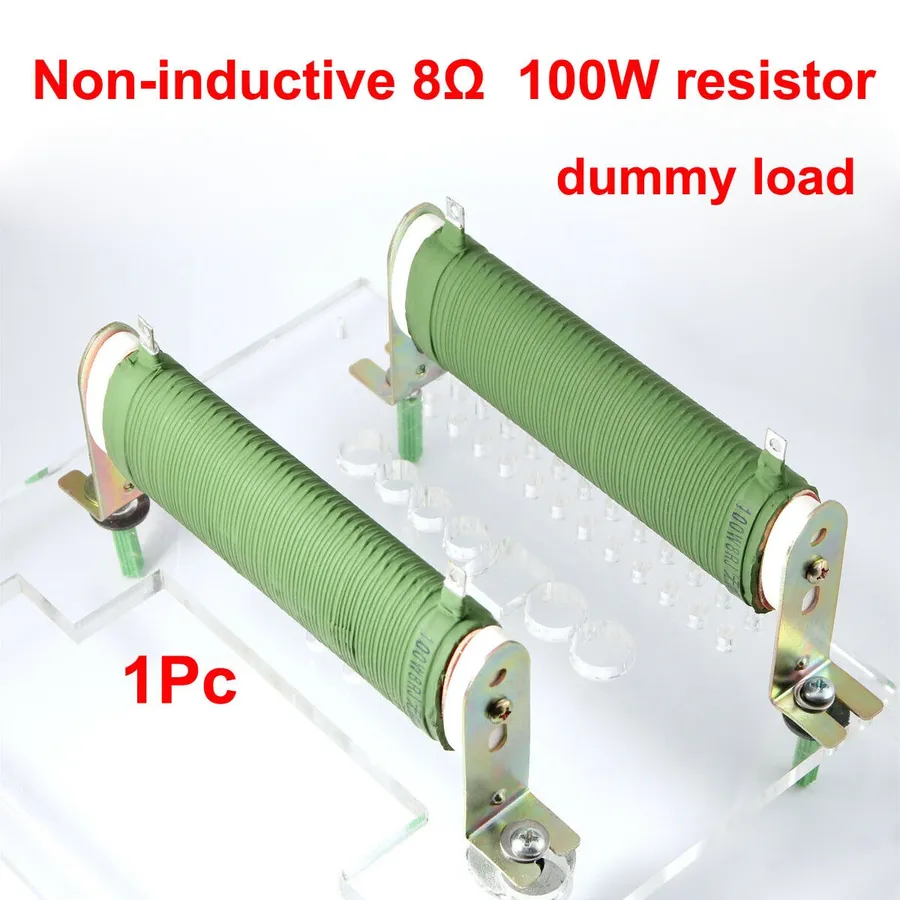Understanding the 1 Ohm 10 Watt Resistor: Applications and Uses

In the realm of electronics, the unassuming 1 ohm 10 watt resistor plays a surprisingly pivotal role. Like a tiny gatekeeper, it controls the flow of current in circuits, managing power to protect delicate components. This article unravels the mystery of this small but essential component, examining its construction, applications in everyday electronics, and even automotive use, demonstrating why it's vital in many situations. Understanding the 1 ohm 10 watt resistor is a key to understanding much of modern technology.
What is a 1 Ohm 10 Watt Resistor?

A 1 ohm 10 watt resistor is a passive electronic component designed to offer a specific resistance of 1 ohm to the flow of electrical current, while also being capable of dissipating up to 10 watts of power as heat. This dual specification of resistance and power handling capability is crucial to its application and performance.
The '1 ohm' value dictates the opposition to electrical current; a lower resistance allows more current to pass. Conversely, '10 watt' indicates its capacity to handle power without overheating or failing. The physical size and construction of the resistor are directly linked to its power rating. Larger resistors with more substantial heat-dissipating surfaces can generally handle more power. These specifications are essential for selecting the right component for a circuit and ensuring its reliability.
Compared to other resistors, the 1 ohm value is considered low, making it suitable for applications where a small amount of resistance is required for current limiting or sensing. Its 10-watt rating signifies a moderate power handling capability, making it less susceptible to damage from high current flow when designed within the correct application. The material of construction is also important. Typically, these resistors are wire-wound, metal-film or thick film offering different levels of precision, temperature stability and physical properties. Wire wound resistors consist of a length of high resistivity wire wound around a ceramic or fiber glass core, metal film resistors consist of a thin film of metal deposited on a substrate, while thick film resistors use a paste-like material screen printed on a substrate.
Key Electrical Characteristics of a 1 Ohm 10 Watt Resistor
The 1 ohm 10 watt resistor is primarily defined by its resistance of 1 ohm and its power handling capacity of 10 watts. These parameters dictate its behavior and suitability within electrical circuits. Understanding these, along with tolerance and temperature coefficient, is crucial for effective circuit design and operation.
| Parameter | Description | Impact on Circuit |
|---|---|---|
| Resistance | 1 Ohm | Determines the opposition to current flow. A lower resistance allows more current to flow for a given voltage. |
| Power Rating | 10 Watts | Indicates the maximum power the resistor can dissipate without damage. Exceeding this rating can lead to overheating and failure. |
| Tolerance | Typically ±1% or ±5% | Represents the allowable variation in the stated resistance value. A tighter tolerance provides more accurate circuit behavior. |
| Temperature Coefficient | Typically ±100ppm/°C or higher | Specifies how much the resistance changes with temperature. This impacts the stability of the resistor's resistance under varying temperature conditions. |
The relationship between voltage, current, and resistance is governed by Ohm's Law (V=IR). Using a 1 ohm resistor, for every 1 amp of current, a voltage drop of 1 volt will be present across the resistor. The power dissipated by the resistor can be calculated using the formula P = I²R or P = V²/R. For a 1 ohm, 10 watt resistor, the maximum current before exceeding the power rating is ~ 3.16A (square root of 10 Watts/1 Ohm) and voltage is ~3.16V (square root of 10 Watts * 1 Ohm).
Temperature significantly impacts the performance of a resistor. As temperature increases, resistance typically increases due to the temperature coefficient of the material. This can affect circuit performance, especially where precision or stability is essential. The 10 watt rating is specifically for heat dissipation, where the resistor is designed to handle power within safe limits by converting the electrical energy to heat, which is then released to the surrounding environment.
Common Applications in Electronics

The 1 ohm 10 watt resistor, while seemingly a simple component, plays a crucial role in a variety of electronic circuits. Its low resistance and moderate power handling capability make it suitable for applications where precise current control and heat dissipation are necessary. This section will explore some common applications where this resistor is used in electronics.
- Current Limiting
A primary application of a 1 ohm 10 watt resistor is in current limiting circuits. By placing the resistor in series with a load, the current is regulated, preventing damage to sensitive components from overcurrent. The relatively low resistance ensures that the voltage drop across the resistor is minimal under normal conditions, minimizing energy loss while still providing protection during fault conditions. This is particularly useful for circuits with varying load conditions where inrush currents are a concern. - Inrush Current Limitation
Many electronic devices, especially those with capacitive loads, experience a surge of current at start-up. The 1 ohm 10 watt resistor can be strategically placed to limit this inrush current, allowing capacitors to charge gradually and prevent components from being damaged. The 10 watt rating of the resistor allows it to handle the high initial power dissipation without being damaged during the inrush event. - Load Resistor
In some test circuits and signal processing applications, a 1 ohm 10 watt resistor can be used as a load resistor. For example, when testing a power supply or amplifier, a known resistance is used to simulate real-world load conditions. A 1 ohm resistor can draw a significant current to test these circuits under typical conditions. The resistor's power rating ensures that it can handle the power delivered by these circuits during testing. - Simple Current Shunt
A low-value resistor like a 1 ohm can act as a shunt to measure current. By measuring the voltage drop across it (using Ohm's Law), the current flowing through it can be accurately determined without disrupting the main circuit. This is commonly used in current sensing circuits.
While not typically used for precise voltage division due to its low resistance, it could be used in specific situations such as creating a very low value voltage divider when other high value resistors are not available. In such cases, the focus would be on the current limiting properties while allowing only a small fraction of the voltage to be dropped across the resistor.
The Role of 1 Ohm 10 Watt Resistor in Automotive

In automotive electronics, the 1 ohm 10 watt resistor plays a crucial role in several applications, primarily due to its ability to handle significant current while providing a low resistance path. This combination makes it suitable for tasks such as discharging capacitors in Electronic Control Units (ECUs), simulating loads for diagnostic purposes, and facilitating the safe resetting of car computer systems. Its robust construction enables it to perform effectively in the demanding environment of a vehicle.
Specifically, when an ECU or other automotive electronic module needs to be serviced or reset, there is often residual charge stored in the capacitors. The 1 ohm 10 watt resistor can be used to discharge these capacitors safely and rapidly, preventing damage to sensitive components. Similarly, during diagnostic procedures, this type of resistor can be employed to simulate the load of a sensor or actuator, thereby enabling technicians to verify the functionality of various circuits within the vehicle without the need to actually connect them. Furthermore, in some automotive systems, this resistor is part of the design of the circuit, providing a controlled environment for a specific operation.
However, it is critical to exercise caution when implementing a 1 ohm 10 watt resistor in automotive applications. Ensuring compatibility with the specific vehicle system and the circuit in question is vital to mitigate any potential risks. For example, incorrect use can lead to excessive heat generation, which can potentially damage the resistor or surrounding components if the power dissipation capacity is exceeded. Always adhere to the vehicle manufacturer's recommended procedures when using this resistor to ensure safe and effective operation and always take appropriate safety measures to avoid shorting the circuit or damaging other components. Incorrect use of a resistor can lead to system failure and in some cases, may require professional attention.
| Application | Function | Safety Considerations |
|---|---|---|
| ECU Capacitor Discharge | Safely discharges residual charge from ECU capacitors before servicing or resetting. | Use a resistor with sufficient power rating to handle discharge current; ensure correct connection polarity to avoid damaging sensitive components. |
| Load Simulation | Simulates sensor or actuator loads for diagnostic purposes. | Verify the simulated load matches the actual load requirements of the circuit, improper loading could lead to incorrect diagnoses. |
| Car Computer Reset | Facilitates safe reset procedures, preventing damage due to uncontrolled current flow. | Always follow the manufacturer's guidelines for reset procedures, check the correct ratings and tolerance before use. |
1 Ohm 10 Watt Resistor in Audio Equipment

The 1 ohm 10 watt resistor plays a crucial role in audio equipment, primarily for balancing audio signal levels, impedance matching, and providing speaker protection. Its low resistance allows it to manage current flow without significant voltage drop, which is essential for maintaining signal integrity. This specific resistor assists in achieving optimal audio quality by minimizing signal distortion and ensuring efficient power transfer within the system.
In audio circuits, impedance matching is critical for maximizing power transfer and minimizing signal reflections. The 1 ohm resistor can be strategically placed to ensure that the impedance of different circuit stages are compatible, preventing signal loss or distortion.
Speaker protection is another significant application, The 1 ohm resistor can be used in series with a speaker to limit the current during power surges or overloads, safeguarding the speaker's voice coil from damage. This is particularly important in high-power amplifier circuits where over-current can rapidly damage sensitive speaker components. By carefully controlling current, this resistor maintains audio clarity and prevents unwanted electrical interference.
Frequently Asked Questions About 1 Ohm 10 Watt Resistors
This section addresses common inquiries regarding 1 ohm 10 watt resistors, providing clear and concise answers to help you understand their usage, characteristics, and alternatives.
- What is the primary function of a 1 ohm 10 watt resistor?
A 1 ohm 10 watt resistor is primarily used to limit current, drop voltage, or generate heat within a circuit. It's crucial in applications requiring a low resistance and the ability to handle moderate power dissipation. Its low resistance makes it ideal for measuring current through a circuit without significantly affecting it, while the 10-watt power rating ensures it can safely dissipate the generated heat. - How does a 1 ohm resistor compare to a 10 ohm resistor in a circuit?
A 1 ohm resistor offers significantly less resistance to current flow than a 10 ohm resistor. Consequently, the 1 ohm resistor will drop less voltage and limit current less than the 10 ohm resistor in the same circuit. The choice between them depends on the specific requirement: the 1 ohm resistor is used when minimal resistance is desired (e.g., current sensing), while the 10 ohm resistor is appropriate when more resistance is needed to limit current or drop voltage. - What does the 10-watt rating mean for a 1 ohm resistor?
The 10-watt rating of a 1 ohm resistor specifies the maximum power it can dissipate without being damaged or failing. This means that, according to Joule's Law (P = I²R), if the square of the current in amperes, multiplied by the resistance in ohms, exceeds ten, then the resistor will likely overheat. The physical size of a resistor is often an indicator of its rated power dissipation capability. Operating a resistor above its rated wattage results in excessive heat generation, potentially leading to component failure or damage to surrounding circuitry. - Can I use a 10 ohm resistor as a substitute for a 1 ohm resistor?
Substituting a 10 ohm resistor for a 1 ohm resistor should be done with caution, as it significantly alters the circuit's behavior. The 10 ohm resistor will impede current flow more and drop more voltage. This difference can be critical, especially in sensitive circuits where precise current control or voltage levels are necessary. If considering such a substitution, verify the circuit requirements and understand the consequences. - What are the implications of using a resistor with a lower wattage rating than required?
Using a resistor with a lower wattage rating than required can lead to overheating and potentially catastrophic failure. The resistor will not be able to dissipate heat at the rate at which it is being generated, which can lead to a change in the resistance and in some cases can become a fire hazard. Always ensure that the resistor's wattage rating is adequate for the application, providing a safety margin to prevent damage. - How do I choose between a 1 ohm 10 watt resistor and a 1 ohm 5 watt resistor?
The primary difference between a 1 ohm 10 watt resistor and a 1 ohm 5 watt resistor lies in their power dissipation capacity. The 10-watt version can handle twice the power before failing. This means, for the same current, the 10-watt resistor will run much cooler, and may last longer. If you anticipate that the resistor may need to dissipate more than 5 watts, or you need a more robust component, then select the 10-watt version to prevent failure. - Can I use multiple resistors to achieve a 1 ohm 10 watt rating?
Yes, multiple resistors can be combined to achieve a desired resistance and power rating, and this is typically done by either connecting in parallel or in series. To achieve 1 ohm with a higher power rating, you would need to use multiple of the same resistors in parallel, and the overall power rating would be the sum of all the component resistors used. The overall resistance can be obtained from the formula 1/Rtotal = 1/R1 + 1/R2 + 1/R3.... , so for two 2-ohm resistors in parallel this would be 1 ohm, with twice the power handling of a single 2 ohm resistor.
Selecting the Correct 1 Ohm 10 Watt Resistor

Choosing the right 1 ohm 10 watt resistor involves careful consideration of several factors beyond just the nominal resistance and power rating. These include tolerance, material composition, physical dimensions, and manufacturer reliability. Each factor contributes to the resistor's performance, longevity, and suitability for a given application.
| Factor | Description | Impact |
|---|---|---|
| Tolerance | The allowable deviation of the actual resistance from the nominal value (1 ohm). Typically expressed as a percentage (e.g., ±1%, ±5%). | A tighter tolerance (e.g., ±1%) ensures a more accurate resistance value, critical in precision circuits. A wider tolerance is acceptable where high precision is not required. |
| Material | The material used in the resistor's construction (e.g., wirewound, thick film, metal film). | Material affects temperature coefficient, stability, and inductance. Wirewound resistors are robust and can handle high power, but may have higher inductance than film resistors. |
| Physical Size | The physical dimensions of the resistor (length, diameter, lead spacing). | Size affects power dissipation capability and mounting. A physically larger resistor can dissipate more heat. Consider the application when selecting the physical size and mounting options. |
| Manufacturer | The reputation and quality control of the resistor manufacturer. | Reliable manufacturers adhere to stringent quality control measures and provide resistors that meet stated specifications and provide consistent performance. Look for certifications and adherence to industry standards. |
When selecting a 1 ohm 10 watt resistor it's critical to consider the specific application requirements. For example, circuits that require accurate current limiting will require a resistor with a tighter tolerance. In contrast, circuits where the load is not fixed, a resistor with less stringent tolerance may be sufficient. For high-frequency circuits, minimizing inductance is important, this would lead to selecting a metal film resistor over a wirewound resistor. The material chosen will also affect the maximum operating temperature and the derating of the power handing based on operating temperature.
When evaluating different manufacturers, consider their certifications (e.g., ISO 9001), reputation for consistency and the expected lifetime of the resistor. Datasheets should be reviewed carefully to verify the specified performance under various conditions, this will include temperature derating curves and mechanical specifications. By carefully considering these factors, engineers can ensure the 1 ohm 10 watt resistor meets the demands of the circuit, providing dependable and consistent operation over its intended lifetime.
Practical Tips and Best Practices for using a 1 Ohm 10 Watt Resistor
Employing a 1 ohm 10 watt resistor correctly ensures both optimal performance and extends its operational life. Careful consideration must be given to soldering techniques, thermal management, and rigorous circuit testing to prevent premature failure. Understanding common pitfalls, such as exceeding power limits or misapplying the resistor in a circuit, is crucial to avoid potential damage to both the component and the wider system.
- Soldering Techniques
Use appropriate soldering techniques to ensure a strong and reliable electrical connection, avoiding cold solder joints and excessive heat application which can alter the resistance value and damage the resistor. Utilize a temperature-controlled soldering iron and appropriate solder for the task. - Heat Management
Given its 10-watt power rating, effective heat dissipation is critical. Ensure the resistor has sufficient airflow and, where necessary, use heat sinks to prevent overheating, which can lead to premature failure or changes in resistance. Verify that heat transfer is optimized via secure attachment to heat sinking mechanisms. - Circuit Testing
Thoroughly test circuits using multimeters before final implementation. Verify the resistor's resistance using a multimeter to ensure it aligns with the designed parameters, before and after installation, particularly in high current applications to ensure the correct functionality and resistance. - Power Limit Avoidance
Never exceed the resistor’s specified 10-watt power rating. Operating a resistor beyond its power limit will generate excess heat, leading to a drift in resistance and potentially to complete failure. Calculate expected power dissipation using Ohm's Law and adjust the circuit if necessary to remain within the limits. - Correct Application
Ensure the resistor is used in the correct way in the circuit design. Incorrect application of a resistor can lead to unexpected behavior or damage to other components. For example, using a current-limiting resistor in a circuit that needs a shunt will have a detrimental effect on the circuit. - Physical Protection
Protect the resistor from physical damage such as bending or cracking, which can degrade its performance and lifetime. Be mindful of environmental conditions, such as humidity and exposure to corrosive substances, as well as physical handling damage and be gentle when handling the device. - Regular Inspection
Regularly inspect soldered connections and the body of the resistor for damage or degradation over time. Use magnification if necessary to identify micro cracks that may impact performance. Monitor changes in circuit behavior as this may indicate resistor degradation or failure.
The 1 ohm 10 watt resistor, though small, is a fundamental component in a variety of applications, from everyday electronics to complex automotive systems. Understanding its role in controlling current and power is essential for anyone working with circuits. Whether you're using it to reset your car's computer or optimizing audio signals, this resistor plays a vital part. By choosing wisely and using them correctly, you can ensure efficiency and safety in your electronic projects. Remember, this resistor should be treated with the same respect as any other part of the circuit, making it a very important device for electronic enthusiasts and professionals alike.
 AnyPCBA
AnyPCBA